Beating down obstacles
 By: Ivan Otterstrom
By: Ivan Otterstrom

“I like your product, but it is too expensive”
This is a classic and we will be meeting this obstacle very often.
We need to evaluate if the prospect is just horse trading with us of if there is a genuine concern that our price is too much.

The important thing is that the prospect is talking to us. we have not lost the prospect. Our hard labour is bearing fruit. It means that the deliverables are acceptable and that is the first mini-victory.
Is it then all about the money? Not necessarily, there are options here to ‘sharpen the pencil’. We just need to find out what we can do to counter this.
We may start by confirming that the deliverables are the ones that are of interest. We can ask if there are elements we should do away with. An example can be that 50,000 impressions are to much and we can reduce it to 25,000 impressions. That is one way of reducing the cost.
Are the amount of banners sufficient? Is the size OK?
We need to ensure we have the elements right. Confirm it!

Now we might turn to the numbers. We can start asking what price the client could have in mind. It is an old ‘trick’ to get the client to quantify our proposal. If the prospect is actually providing you with a cost they could consider, we can start haggling.
Go from the facts: Your suggestion is a bit steep, but what if we keep the price and reduce the number of impressions and take the banner size down? Will that work?
Or: I can’t go that far on the price, but what if we settle on 15% discount instead of your 25%?

Or: let me talk to my manager and see if we can do that price. But let me clarify: if he/she says yes, do we then have a deal? Can we then get the PO with- in this week?
It could also be that the prospect is comparing our price with what IOL has proposed. Ask the good question: are you comparing our price to a price from our competitors like IOL or Timeslive? Do they have the same deliverables?

Maybe: if I can reduce the price below theirs, do we have a deal?
Never give up
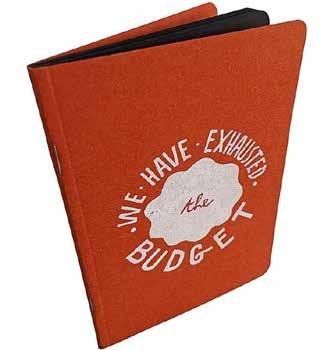
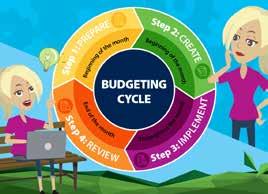
The budget is exhausted for this year.
This is a classic and we need to take it serious. It really means we need to fully understand the client’s budget cycle. When do they do the new budget? When do they need our proposal.
If we are not sure, then we better ask the questions like:
• When is your new budget starting?
• When is you planning cycle?
• When do you need our proposal for the new fiscal?
The client might also have a quarterly review of their marketing budget. That can mean that we have a chance to still be considered.
But it is not over yet. Not until the fat lady sings.
We may still see if the client has any contingency budget left and if we can tap into that. As much as the client may have exhausted current budget, it is also reality that it is impossible to plan everything out for an entire year in advance.

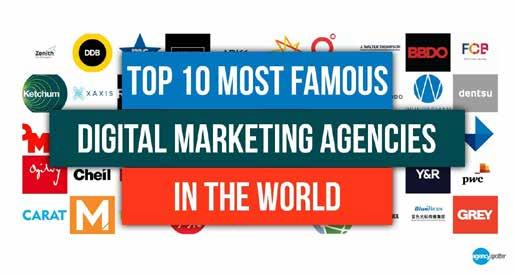
The one entity that typically likes to ‘sit’ on the budget is the agency. You can ask if they have an agency and if that is the way forward. It just might be.
It points into the quest of their activities. Do they have some activities going that you may not have heard of? We must know the best part of what they do, but they may have marketing campaigns that are not ‘public’ yet.
The key question is for all these things: will you put us on the budget for next fiscal and for what activities and with what anticipated amount?
It is also a test to see if your client is really interested. If they are, they will tell you which campaigns they will want you to be part of.

Make sure you follow-up and provide proposals and quotations at the right time and ensure that you keep tap on their campaigns.

I can’t get material made this fast
The client has bought into your proposal. They want to do it, but now we battle logistics.

This may seem like we are there now, but we are not. Material is a very tough one because it might involve a lot more people from our side.
First of all: determine what is it exactly the client wants to achieve? What are we talking about? Is it print editions or is it online banners? This might determine the deadlines you have to set.
First things first: What is the time pressure? There are two options:
• It is a campaign that is linked to a specific motion and the timing is important.
• It is a campaign that is linked to their budgeting cycles. It could be that they need to spend money this quarter; hence the pressure is on to get it done.
If it is linked to a specific motion, they ought to have some material. We are now part of their bigger picture. Look at what they have and see if we can re-use or re-purpose some of it.

If it is linked to their quarterly cycles, we can look at the internet or DStv to see if there is some image-advertising we can use.
And now it becomes complicated. Who is ’we’? it is suddenly editorial and the designers from our side.
Before we commit to doing the job for the client, we need to figure out:
• Can we do it?
• What is the timing?
• Cost implications

The nature of the job might also impact the decision. Is it an advert or advertorial? Designing an advert might be just as hectic as writing the advertorial (editorial input) and do the lay-out.
The two first points are simple, but the last point is not.
If we decide that it is a minor task, we still need to seek approval for doing something ‘for free’. Get approval as these things will typically not be your decision.

And for all these elements, the client will have to approve before we can publish. And that can take time as well.

In essence: as it involves more than YOU, it rapidly becomes a real project with several more people involved and all at a cost that is beyond your authorization.

The friendly client
This is the one client who can ‘eat’ your time. They are nice and attentive and will always respond to you.
… but nothing is really happening.

… but nothing is really happening.
We can easily fall into the ‘trap’ of spending more time with them, because they are friendly. They are nice people to talk to.
We will need to evaluate the client’s intentions after some time. Are they likely to do business with us? where else do they advertise? Do we know their marketing spend?
It also comes down to whether we are talking to the right people in their organization. We need to know more about this type of client. The potential might be there, but we might not spot it.

Emails are easy to do, and it is then important that we furnish them with synopsis relevant to their business. That will require some investigation and evaluation of the client. That must be according to above.

Setting up a real meeting with the client can be the way to get a better understanding of what they want to do. It can give us the chance to let them explain what they want to do and for us to see if there is synergy.
Such synergy is difficult to spot if we are just ‘good friends’.
It is also worth trying to put a year-plan together for such a client. It will enable a dialogue and giving us the chance to see how well we can serve them.
If we are still not getting there, we can email synopsis, supplement diary lists and other information on a reasonable basis.
That might be the preferred method as we should evaluate the time we are spending without any return.
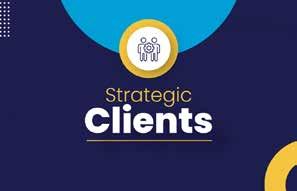
…And that is a story for next time.
However, there is one over-riding factor: is the client of strategic value to us? is it the client we simply have to have as an advertiser?
If that is so, it will put the client into a different league but then the interaction might be different. We will then have to be far more aggressive..
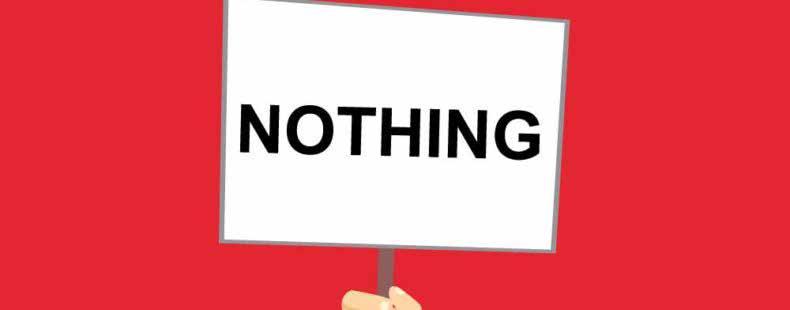
Nothing, nada, nix
This is the strange situation where there is no feed-back at all. You are talking into a void.

The first thing to evaluate will be: is this a strategic client? Is this one of the clients you simply will have to have.
Next step is to evaluate is the person or department you talk to. Are you in contact with the right entity?
It might be difficult to ascertain just like that. Maybe it will take a bit of research and that is where there might be help available.
Ask within your own organization: does anyone know this client and who’s who there. That can be the easy way out.
Maybe ask friends in the industry? Some might give you an answer. After all, it could be that the problem is the client and not you. Others may have the same experience.
If we get to talk to someone else (higher in the

hierarchy), we might get a hearing or at least an answer.
This is the breakthrough you need: someone is actually responding!

The response might be negative. As in not interested, and then it is time to move on, unless it is a strategic client. The musthave one.
Unsolicited proposals can be the way forward. A proposal will show the client that you have done your home-work and understand what they want to do.
You may have looked at their advertising spend with other media to see where you can add value.
However, we must assume that the marketing people are doing their job, which also entails evaluating proposals and looking for new ways of promoting the company.
It then follows that your unsolicited proposals, which can be extensive, will show them that you could be a contender for their marketing.
Such proposals should also reach further than the people who do not react to any of your communications.
You have been there and it is not working, so you have to find the next level of command or a new set of people to talk to.
It all comes down to one thing: if it is strategic, research the company and get to the people who will take you seriousy.

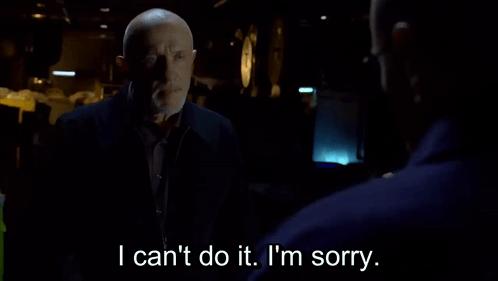
I can’t authorize that myself
We are now far down the sales cycle. During discussions with the client (and before the final proposal is submitted) your contact is pointing out that he/she cannot authorize the amount.

The solution discussed is exactly what the client would like to see, but the final amount is beyond the authorization levels.
Now what?
The crux is that the solution is still very much what the client wants and that is the starting point.
It is now up to you to get the deal landed because it is there after all.
Maybe the client has discussed it with the colleagues and the next level in the hierarchy. That is where we ask for clarification.
Just confirm that the solution is the right one and then ask whether

your contact will take it further to the people who can authorize it. In essence: will your contact champion this proposal?
Also ask who can authorize it and whether you should be interacting with that person. Make sure not going over the head of your contact. It is the person you will have to talk to on the next many deals.
If your contact is not keen on taking it forward (many good reasons), you may ask if certain things should be left out for now? That can take the price down.
The solution may still be the right one, it just needs to have a phased approach. Ask the client how they want to do it.
It can easily be that the entire solution will stretch over more than one financial year. This is where authorization levels might come in.

However, if this is government entities, we should be aware of dividing the proposal into ‘bitesized’ lumps to squeeze multiple elements below a certain authorization level. That is still to be seen as one project according to PFMA.
If it is real, there is no problem. Just make sure it appears as one project in the client’s finance system. Nobody wants to go to jail!

What we must know is: we have the deal. We just need to make sure it can go through the client’s system.
About the author

Ivan Otterstrom is born in Denmark in 1957. He moved to South Africa in 1991 being a sales person NCR/AT&T.
Ivan has always been in sales, starting his career in IT sales in Denmark. With a degree in Computer Science and a degree in Economics from School of Economics in Copenhagen, he has managed to combine sales and financial considerations into high-end and hi-tech sales environments.
Ivan and his wife Sybil are running a very specialised sales company. Their company is providing sales assistance and specialized courses to a few select clients.
It is this base of high-end clients that forms their expertise in sales management.
Ivan is active in several private enterprises and values the company of his wife Sybil and daughter Ntsiki.
